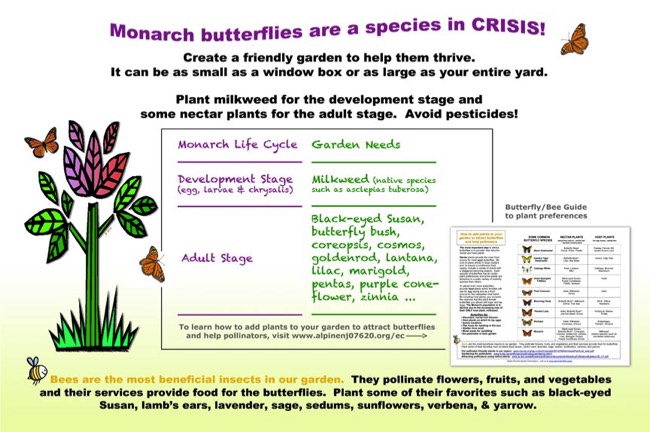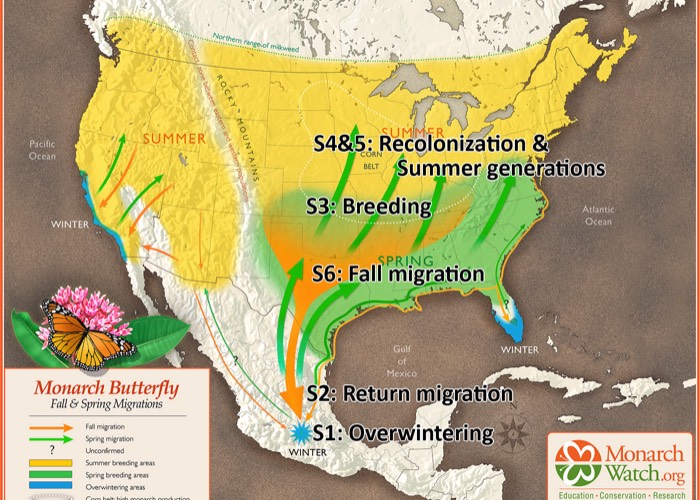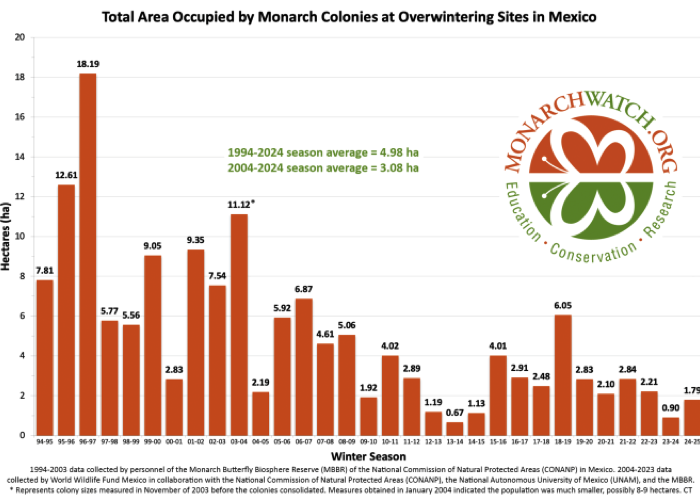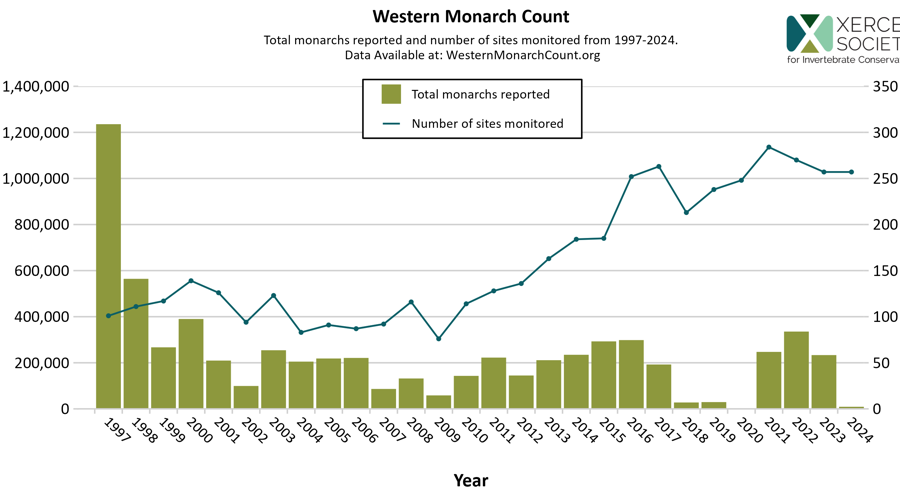
Monarch Butterfly Crisis
_____________________________________________________________________________________________________________________
The monarch butterfly is a species in crisis!
Its key threats are the loss of milkweed in the USA, use of pesticides, adverse weather conditions, and deforestation.
Each fall, eastern monarchs (east of the Rockies) travel to central Mexico, while western monarchs migrate to the California Coast, where they over-winter before returning for breeding.
Each fall, eastern monarchs (east of the Rockies) travel to central Mexico, while western monarchs migrate to the California Coast, where they over-winter before returning for breeding.
Eastern monarch update:
The eastern monarch numbers are in, and they are of interest again, but this time not for the fact that the population declined but for the rate of increase. Last year the overwintering population was extremely low, occupying only 0.90 hectares when all colonies were counted. That number was second only to 2013 when the total was 0.67 hectares. The number this year is 1.79* hectares and that is remarkable. It’s a doubling of the population. How many vertebrate species can double their numbers in one year? Surely few, except for some fishes and a few birds that brood large clutches. Read more at Monarch Watch.
Click image to enlarge
Western monarch update:
The western monarch count declined to near record low. The 28th annual Western Monarch Count has reported a peak population of just 9,119 butterflies this winter. This is the second lowest overwintering population ever recorded since tracking began in 1997 and coincides with monarch butterflies being proposed for protection under the U.S. Endangered Species Act.
This number is a sharp decline from the past three years, when more than 200,000 overwintering western monarchs were observed each year. It is only slightly above the all-time low of less than 2,000 monarchs in 2020, and well below the millions of butterflies observed in the 1980s that scientists consider a stable population level. Read more at Xerces Society.
Click image to enlarge
How to help. There are many factors out of our control, however, we can help the monarch butterfly by planting native milkweed like butterflyweed (Asclepius tuberosa). Milkweed is the only host plant that monarchs will lay eggs on and the only plant that the caterpillars can eat. We can also help by planting native nectar plants for their adult food source and also avoiding the use of pesticides in our gardens. Bring back the monarchs, they are beautiful in appearance, useful as pollinators, and their innate ability to navigate long distances across the continent is a natural wonder.

~ ~ ~
All types of native bees are also in decline. Many of the plants that grow in our environment depend on bees for pollination. They pollinate flowers, fruits, and vegetables and their services provide food for the butterflies. Help preserve our environment . . . learn how to add plants to your garden to attract butterflies and help pollinators. Click here for your Butterfly/Bee Guide to plant preferences.






